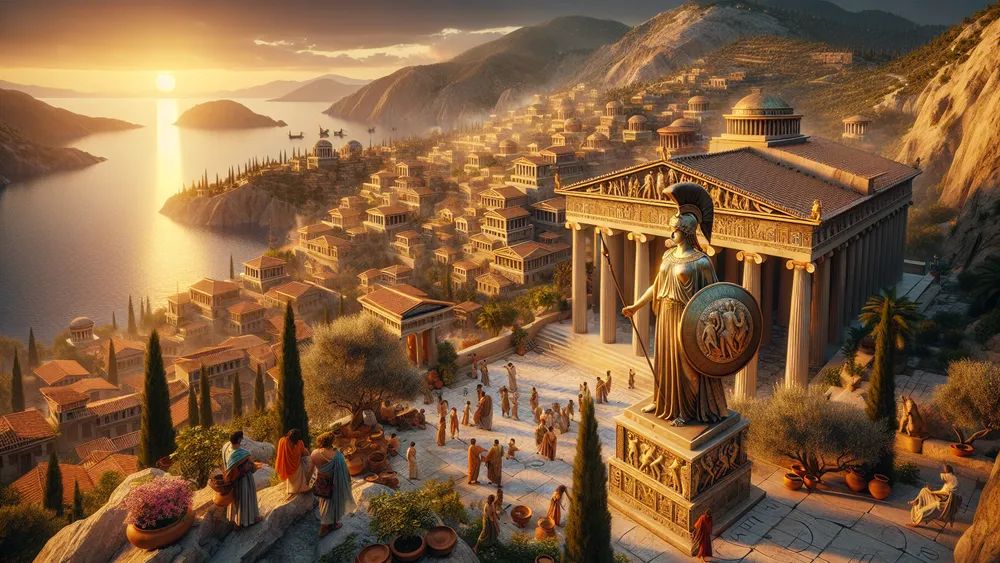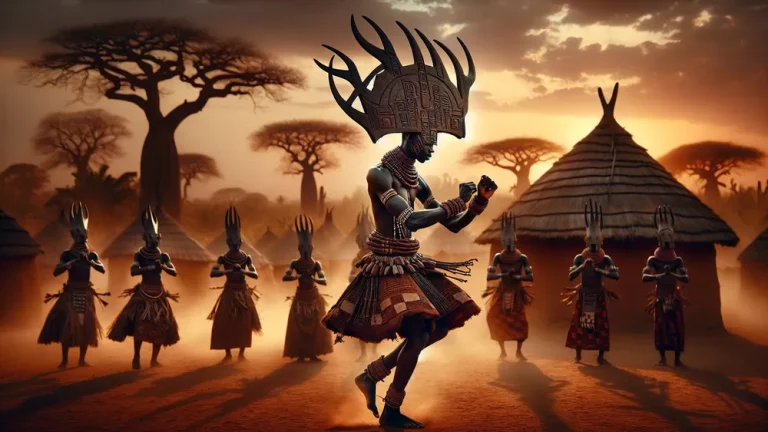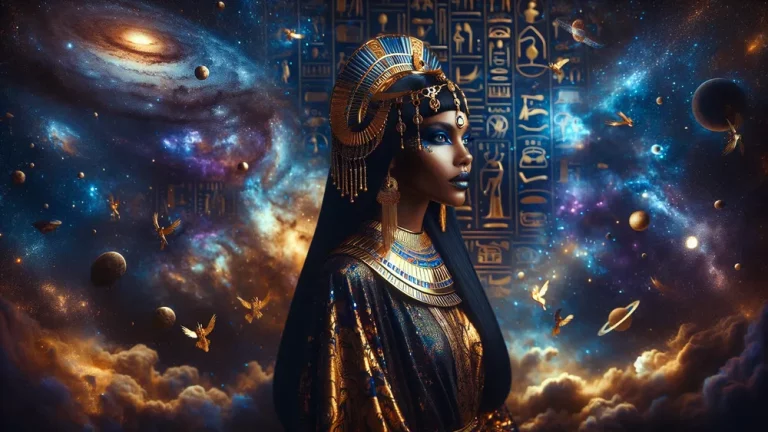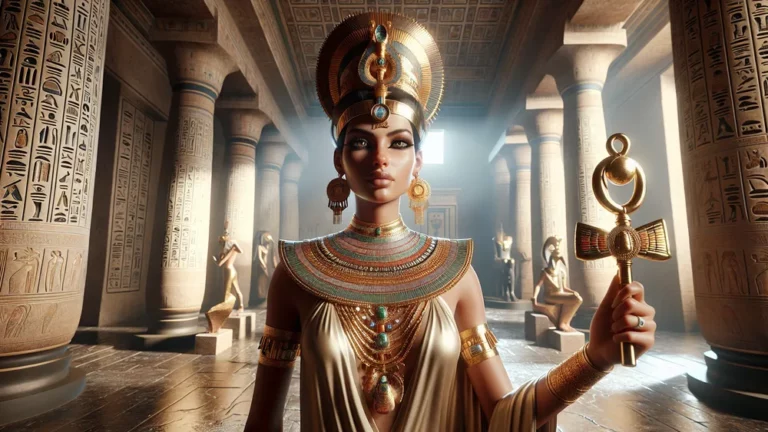Mesembria: Ancient Greek City And Mythological Connections
Mesembria is an old city with deep ties to Greek culture. It played an important role in both history and myths, which means it is not just a small mark on maps from the past.
Key Points:
- Mesembria, now Nesebar in Bulgaria, was a key trade city linking the Mediterranean and Black Sea.
- Its name means midday or south, tying it to sun myths about Apollo and Helios.
- Thracian origins blended with Greek settlers, creating a mix of cultures and beliefs.
- Worship focused on Apollo, Helios, wind gods, and Naiads tied to water springs.
- Myths about Mesembria connect it to nature, divine forces, and seasonal cycles.
- It played political and economic roles during Hellenistic and Roman control.
- Today, Nesebar holds ancient ruins and is a UNESCO World Heritage Site.
Found in an important spot near key trade routes in the northern Aegean area, Mesembria became a place for a lot of trade and culture during the time of the Hellenistic period. But its importance goes beyond physical things. Mesembria also had a role in myths and religious beliefs.
Unlike famous cities such as Athens or Sparta, Mesembria stands out because of its mix of facts about its location and its links to stories about the sun and sky. Its name, which comes from the Greek word mesēmbria (which means “midday” or “south”), gives a clue about its connection to the sun.
This is especially true with gods like Helios, who is the god of the sun, and Apollo, a god connected to light and harmony. Stories about myths and rituals tied to Mesembria represent how much the ancient Greek people thought their cities were tied to things in nature and gods.
For people who don’t know much about Greek stories, this idea came up a lot. Cities weren’t just places for living and trade. Often, they were religious centers and a way to explain the bigger things in the world, like the cycle of daytime and nighttime. This blog explains how Mesembria is an example of both physical and mythical importance.
It was a center of political strength during the Hellenistic age and also a place that inspired stories about gods, nature, and the beliefs people had long ago.
Mesembria: Overview and Key Facts
| Key Aspect | Details |
|---|---|
| Name Origin | The name “Mesembria” comes from the Greek word mesēmbria. This means “midday” or “south,” making it connected to the sun and themes about the sky. |
| Geographical Location | It is located on the northern Aegean coast, in what is today called Bulgaria. The area is now named Nesebar, and the city was in a good spot for trade. |
| Role in Trade | An important place for trading and business because it could connect the Black Sea to routes through the Mediterranean. |
| Founding Myth | Greek settlers are said to have started it. They were guided by signs and supported by Apollo and Helios, gods connected to the sun. |
| Religious Practices | Most people worshipped Apollo and Helios here. They also gave importance to local nymphs and the springs tied to them. |
| Cultural Role | The city helped spread Greek culture. It brought Greek art, language, and religion to nearby areas. |
| Political Role | This city was part of political struggles during the Hellenistic age. At some point, it became part of Roman territory. |
| Famous for Myths | Mesembria is known for its connection to the sun and myths about the heavens. These links made it a vital part of ancient Greek stories. |
| Modern Importance | Today, Nesebar is a UNESCO World Heritage Site. It keeps some parts of Mesembria’s history and myths alive. |
Where Mesembria Came From and Why It Mattered
If you want to understand what Mesembria meant to ancient Greece, it helps to think about where it started, why its location worked well, and how it became important in culture early on. These parts help explain why the city was busy with trade and life, while also being a place people thought of as tied to gods and myths.
Its Location and Why It Was a Big Deal
Mesembria was in a good spot, and this made it important. Its location helped the city become successful in both trade and culture during ancient times. It was placed near the northern side of the Aegean Sea, and you can find this area in what is now called Bulgaria.
The city was also close to the Black Sea, which meant it became a major place for trade between areas connected by the Mediterranean and the Black Sea. The city was busy with trade because it had good farmland nearby, springs for fresh water, and fish from the sea. Other major port cities, like Alexandria or Venice, also grew in similar ways.
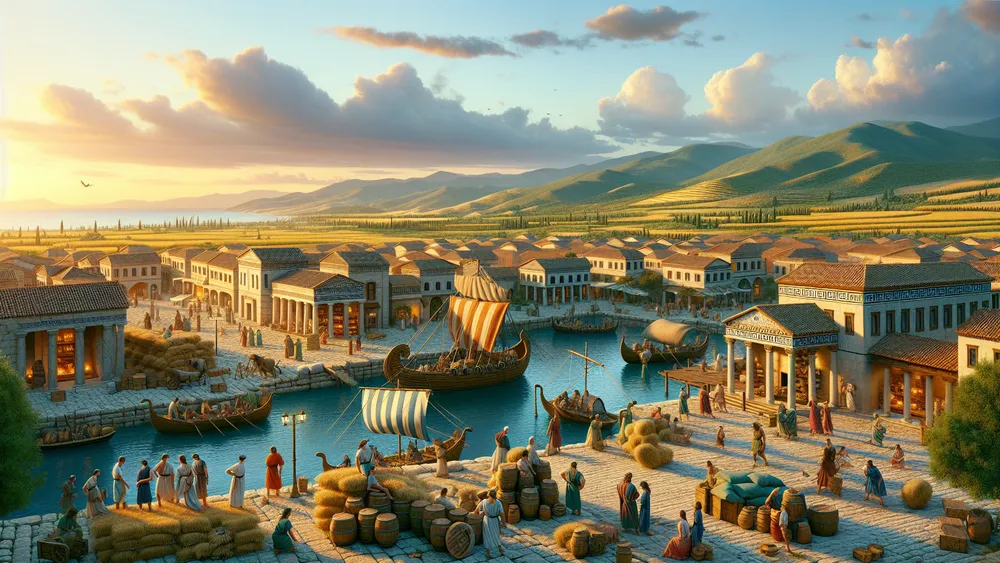
Mesembria thrived because it had what people needed: reliable resources, access to trade routes, and places where different cultures could meet. It became richer and more important because of all this interaction between Greek cities and nearby Thracian tribes. And during times of war, this location was important to control. Whoever held Mesembria had strong economic and military power in the area.
| Feature | Details |
|---|---|
| Region | Found in modern-day Bulgaria, near the northern Aegean and along the Black Sea coast. |
| Natural Features | The area had good farmland, fresh water from springs, and plenty of fish from the sea. |
| Maritime Importance | Connected major trade routes between the Mediterranean and the Black Sea regions. |
| Cultural Connections | A link between Greek city-states and nearby Thracian tribes to exchange culture. |
| Defensive Value | It was in a natural harbor with good terrain for protection during wars. |
Mesembria was a key city in ancient times because its location near the Aegean and Black Seas made it a hub for trade, culture, and military power.
The Early Days and the Legends Around Its Beginnings
The beginning of Mesembria started during the time when Greeks were building settlements in the northern Aegean and Black Sea regions. This happened over many years, between the 7th and 5th centuries BCE. Like other colonies, Mesembria was set up by Greeks who wanted good farmland, places to trade, and locations that helped them control the seas.
Before the Greeks came, Thracian tribes already lived in the area, and archaeological evidence helps explain how these earlier people shaped the land. Later, Greek settlers from Megara arrived – they were known for making other important colonies, such as Byzantium – and built Mesembria, turning it into a Greek city-state. Over time, the Greeks and Thracians built connections, even though they sometimes had disagreements.
Because of this, Mesembria’s cultural identity included parts of both Greek and Thracian traditions, especially in art and religion. You can see how these two cultures mixed as the Greeks added their own political systems and myths to the area’s traditions. Myths also say that Apollo, the god of light, helped guide the Greeks to Mesembria. The settlers believed the city had divine favor because of its connection to the sun.
In one story, Apollo gave colonists signs through solar patterns, and the city’s name – meaning “midday” or “south” – fits this very well. They built altars and sanctuaries to both Apollo and Helios, the sun god, to show their belief that the city was protected by the gods. Over time, different versions of these myths appeared.
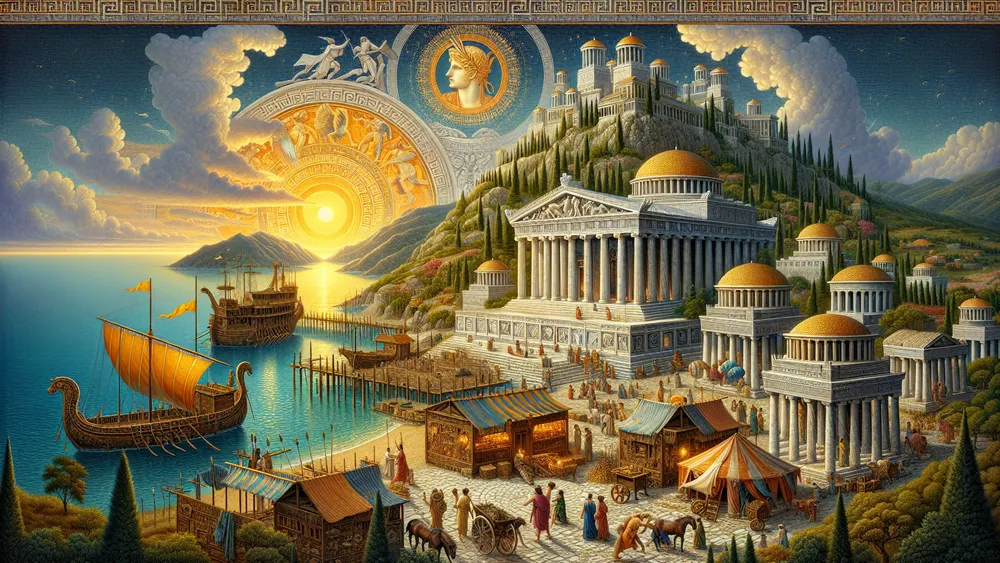
Some later Roman stories focused more on Helios rather than Apollo, which helps explain how religious beliefs in Mesembria changed over the years. These legends meant a lot to the people who lived there, linking their city to both the land and divine powers above.
Mesembria’s Part in Ancient Greek Power Struggles
Mesembria sat in a significant spot along trade routes that connected the Aegean and the Black Sea. This location made it a place that people and powers wanted to control. Its natural harbor was valuable for trade, and because it was near major sea routes, it kept getting pulled into conflicts over who would hold it.
During the Classical period, Mesembria often had to side with bigger city-states like Athens or Corinth to stay safe. Smaller cities like this often worked with stronger allies when larger wars, such as the Peloponnesian War, broke out. Later, during the Hellenistic period, things changed again.
After Alexander the Great’s conquests, some of his successors, including both the Antigonid dynasty and the Ptolemaïc dynasty, took over Mesembria at different times. Because these powers were all competing to control important trade areas, Mesembria became part of their struggles. The city wasn’t just useful for trade. Its spot gave rulers a base for their influence in the region.
Holding Mesembria could mean more trade money or stronger control of sea routes, which made it valuable. This is similar to how countries today often fight to control key coastal areas because of what they offer economically and militarily.
The Mythological Stories and Beliefs Tied to Mesembria
Myths played a big part in how people in Mesembria lived their lives. They shaped the city’s identity and connected everyday routines to stories about the gods. These beliefs also included symbols related to the sky, the sun, and the stars. Now we will look closely at the myths, the gods, and the rituals that influenced life in this ancient city.
They help explain what Mesembria was like and show how much of its culture came from religion.
How the Sun and Apollo Were Celebrated Here
In Mesembria, people had a strong connection to the sun and its power. Even the city’s name came from the Greek word “mesēmbria,” meaning “midday” or “south,” which made it natural to link the city to the sun. Apollo, the god of light, was seen as central to these beliefs. Stories about him describe him as a powerful Olympian who brought light as he moved the sun across the sky in his golden chariot.
Later myths shared this role with Helios, depending on the version. The people of Mesembria honored Apollo with festivals and rituals. They believed he kept their lives in order and brought wealth to the city. Archaeologists think Apollo was very important there because they have found remains of altars and small temples that were built for him.
Writings and offerings, including ceramic pieces and golden objects shaped like the sun, also suggest a deep respect for the god. These practices weren’t only about religion. Mesembria, as a farming city, depended on the sun for growing crops and planning seasons, so solar worship had a practical side too.
To honor Apollo, they likely held communal prayers, festivals, and maybe even large gatherings during the solstices. They also probably sang hymns for Apollo, brought him gifts from their harvest, and performed music or dances to ask for his blessings. This is similar to what other Greek cities did, making Mesembria part of a larger tradition.
Examples of Apollo and Sun Celebrations in Mesembria:
- Altars and small temples built for Apollo, with special writings on them.
- Offerings made of ceramic votives shaped like the sun or golden objects.
- Festivals during solstices, which marked important times of the year.
- Songs, hymns to Apollo, and performances held in his honor.
- Buildings with designs tied to solar alignments, symbolizing Apollo’s power.
The Naming of Mesembria and the Story of Helios
The name Mesembria comes from the Greek word “mesēmbria,” which means “midday” or “south.” This name connects the city to both its location and the sun. In Greek stories, Helios was the god of the sun. People imagined him driving a golden chariot across the sky every day.
This idea of Helios gave people a sense of safety and order, which might have been meaningful for the people living in Mesembria. They may have seen his presence in the sky as a sign that their city was protected and blessed. Stories about Helios describe him as bright and powerful. He drove his chariot, pulled by horses that never died, from the east at dawn to the west at sunset.
Sometimes, he was seen as separate from other gods, like Apollo, especially in earlier Greek religions. In Mesembria, the stories about Helios could have helped shape the city’s culture. People may have used art and festivals to honor him. They made solar symbols like crowns or golden chariots to represent their connection to Helios.
Though there isn’t much written specifically about Mesembria, other Greek cities had daily prayers or hymns to Helios at sunrise and sunset, so Mesembria may have done the same. The connection to Helios wasn’t just about stories or religion. It was also part of how Mesembria was built.
Like other ancient cities, Mesembria’s temples and public spaces may have been aligned with the path of the sun, which could have been a way to honor Helios. Seasonal changes like solstices were likely important for rituals. During these times, people believed Helios’ energy was at its strongest, so they made offerings to him.
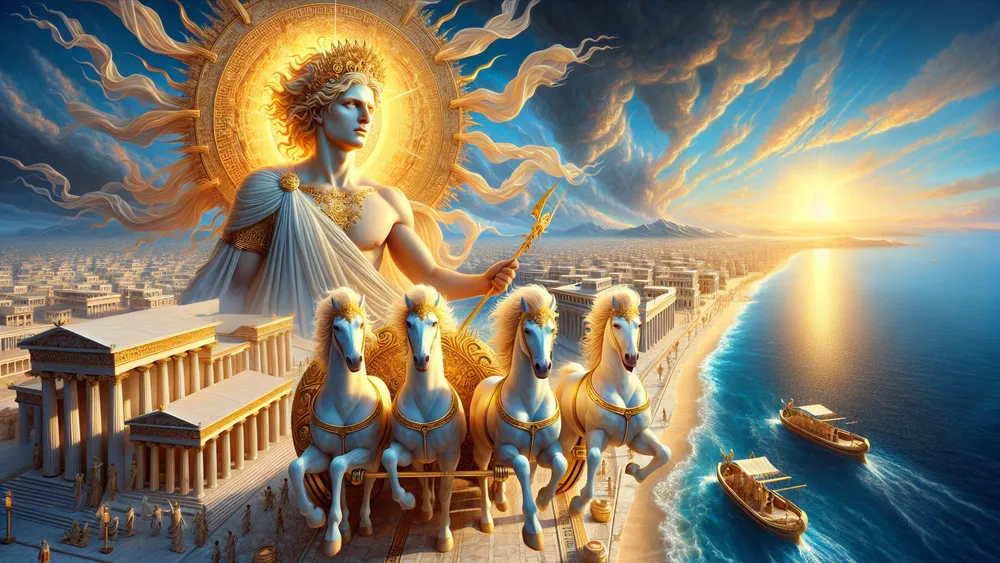
In some places, rituals included bonfires or shiny objects to reflect the sun’s light, and Mesembria likely followed these traditions too. These activities probably helped the people of Mesembria feel connected to Helios and his light, which they saw as a constant source of protection.
Wind Gods and Their Legacy in Mesembria
The coastal city Mesembria depended on trade through the sea and relied a lot on nature – especially the wind. In Greek myths, people believed that the AnemOI, or wind gods, controlled the four main winds, which were important for weather, the seasons, and navigation. Two of these winds, Boreas (the North Wind) and Zephyrus (the West Wind), mattered most to Greek coastal cities.
For Mesembria, Boreas was likely very significant because his cold, harsh winter winds were believed to come from the Thracian region, which was close to the city. The winds were both practical and symbolic. On one side, the city relied on them for sailing trips. On the other side, they were seen as having divine power.
Sailors and traders probably prayed or gave small sacrifices to the wind gods, hoping for safe journeys and good winds to carry them home. Winds didn’t only help with trade – they also became part of how Mesembria defined itself. People in the city likely showed respect for the wind gods with paintings or pottery.
On these, you might see winged figures bringing soft breezes or, at other times, wild gusts. Zephyrus, a gentle wind connected to the arrival of spring, might have been especially tied to planting and harvest seasons. Like in other places, people in Mesembria probably saw themselves as strongly connected to the wind gods – not just natural forces, but powers that had a direct impact on their survival.
While little direct evidence has been found, nearby cities had shrines to the AnemOI, so Mesembria may have had them too. The role of the winds didn’t stop at myths. How they planned temples and open spaces in Mesembria probably followed the idea of wind patterns, much like other Greek cities did.
Seasonal changes, such as the solstices, were likely important times for rituals to honor the wind gods. At times like these, people believed the energy of the gods was strongest. In some cities, they made offerings using fire or shiny objects to connect with divine winds. Mesembria likely had similar traditions to reflect its deep reliance on and respect for Boreas, Zephyrus, and the other winds.
These gods, for the people in such cities, blended faith, nature, and everyday life into something they could depend on.
Mesembria heavily relied on sea trade and believed the wind gods, especially Boreas and Zephyrus, shaped their survival, rituals, and daily life by influencing navigation, seasons, and farming.
Mesembria’s Springs and the Nymphs Who Guarded Them
In Greek myths, springs were not just seen as simple places to get water. They were considered special locations watched over by divine beings called Naiads, nymphs of fresh water. Mesembria, being a coastal city that relied heavily on nearby springs for fresh water, likely thought of these places as both useful and deeply important.
Naiads were described as magical spirits tied to the water, believed to bring life, health, and balance to the land. People imagined them as women, sometimes half-human and half-mystical, who lived near springs, fountains, or wells. To honor the Naiads, people often left gifts, such as poured water or wine, flowers, or little statues, at altars or shrines next to these special sites.
For Mesembria’s people, the springs and the Naiads linked to them were part of everyday life and religious practices. Travelers might visit to ask for blessings, and pilgrims could come for purification or healing. Festivals or ceremonies on certain days, maybe tied to the moon’s phases, may have included events to thank the Naiads.
Tales of nymphs connected to Mesembria’s springs probably served as reminders about how important water was and why it needed to be treated with care. While no direct evidence has been found in Mesembria, other cities in Greece have altars or carvings of nymphs near springs, so Mesembria may have had these too.
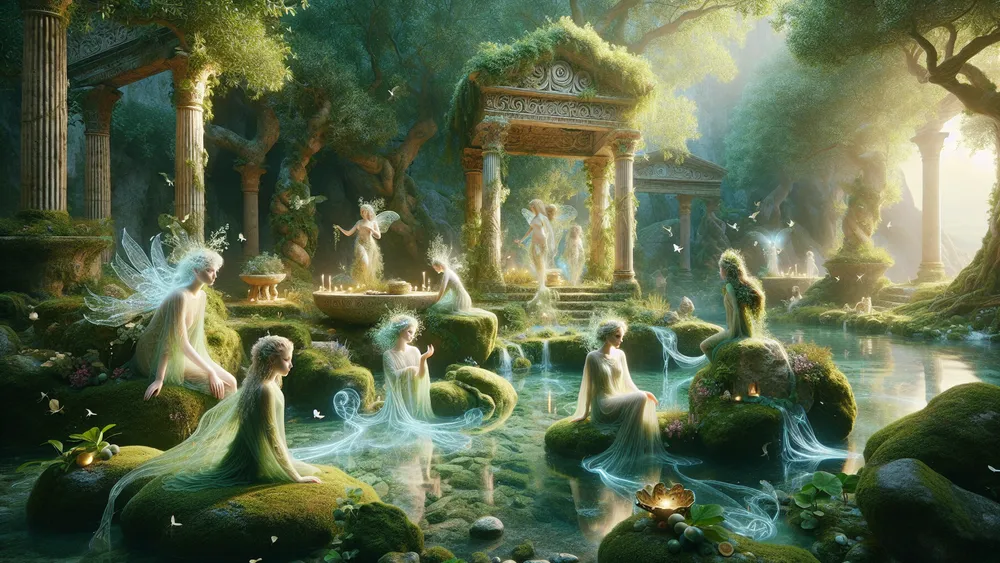
Key Sacred Springs and Nymph-Related Practices in Mesembria:
- Special Wells: Springs believed to be home to Naiads were likely visited by both locals and travelers.
- Offerings Near Springs: Gifts like poured wine or water, flowers, or small statues were left to honor the Naiads and their protective powers.
- Healing Connections: Some springs may have been seen as places to cure diseases or help with childbirth because of myths about Naiads.
- Seasonal Celebrations: Festivals tied to the moon or seasons might have included dances or water rituals to thank the nymphs.
- Art Depicting Nymphs: Pottery or carvings of Naiads may have been used to recognize their importance in daily life.
What Writers of the Time Had to Say About Mesembria
Mesembria was not written about as much as big Greek cities like Athens or Corinth, but some classical authors still mentioned it. They often talked about its importance due to its location and its connection to Greek myths. One of these writers, Herodotus, often called the “Father of History,” wrote about nearby Thracian towns.
Those towns may have interacted with Mesembria and played a role in trade and agreements in the region during ancient times. Another writer, the geographer Strabo, gave hints about places along the coast of the northern Aegean Sea. He explained that cities grew wealthy because of where they were located and because they adopted Greek traditions and religion.
While we do not find many direct myths about Mesembria, some later Hellenistic poets used places like it in their poems. They used the city as a setting for stories about gods and their connection to the natural world. These details, small as they may be, suggest that Mesembria mattered in several ways.
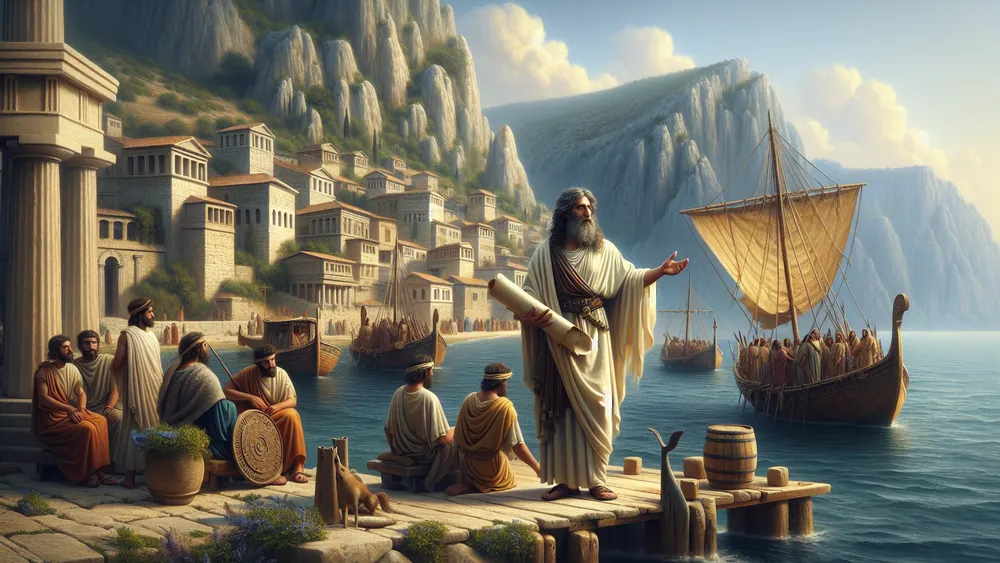
Its mix of geography, culture, and myths helped it hold a place, even if a smaller one, in the wider Greek world.
How Mesembria Fits into Greece’s Mythical Nature Stories
Mesembria fits naturally into the myths of ancient Greece. It was a place where forces like the wind, water, and sun came together with human life. This created a kind of balance between nature and people. Just its name points to its connection with the sun and gods like Helios, who, in myths, traveled across the sky each day.
This story reflected both the daily cycle and the passing of seasons, tying the city to larger ideas about life and time. Wind gods like Boreas and Zephyrus also played a role in how people thought about Mesembria. These gods were believed to control the winds, which were critical for sailing and trade.
Because of this, the winds became connected both to the city’s survival and to its culture. Finally, the springs in the area, which many thought were under the protection of Naiads, show how important water was to both daily life and religion. Springs were seen as sources of life and gifts from the gods.
If you want to learn about other forces – whether they are ideas like time or elements like rivers – that shaped ancient Greece, check out this full list of all Greek Abstract and Natural Forces. Mesembria, like other Greek cities, stands as an example of how myths helped people understand the world around them. The myths turned natural elements into stories about gods, life, and the universe.
FAQs
1. Who founded Mesembria in Greek history?
Who founded Mesembria in Greek history is attributed to colonists from Megara and settlers of Thracian origin, blending historical and mythological narratives.
2. How is Mesembria tied to Greek solar myths?
Mesembria is tied to Greek solar myths through its name, meaning “midday,” and its association with Helios and Apollo as deities of the sun and light.
3. What Greek deities were primarily worshipped in Mesembria?
The Greek deities primarily worshipped in Mesembria included Apollo, Helios, the wind gods, and local nymphs closely tied to the city’s natural and mythological essence.
4. Are there modern remnants of Mesembria’s mythological past?
Modern remnants of Mesembria’s mythological past include archaeological findings such as temple ruins, inscriptions, and artifacts tied to its worship of Apollo, Helios, and other deities.

